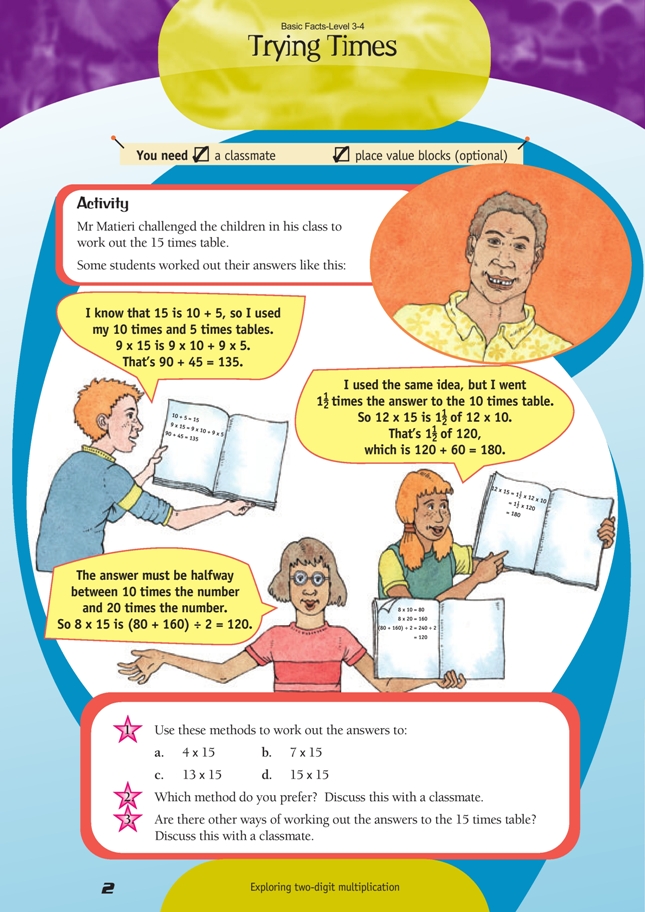This is a level 4 number activity from the Figure It Out series. It relates to Stage 7 of the Number Framework.
A PDF of the student activity is included.
Click on the image to enlarge it. Click again to close. Download PDF (184 KB)
use mental strategies towork out 15 times table
FIO, Levels 3-4, Basic Facts, Trying Times, page 2
classmate
This activity may be quite challenging initially, especially for those students who are used to using vertical written algorithms, which they may try to visualise. The students could work in pairs to experiment with the different methods shown.
All these methods build students’ skills in mental calculation and help to develop their number sense. Encourage the students to split the factors into small numbers or to use other known factors (5, 10, and 20) as a bridge. Concrete models using place value blocks (longs and little cubes) patterned in rows of 15 may help some students to understand the value of splitting the rows of 15 into groups of 10 and groups of 5 to work out the answer. You could work through an example with the class, using all the methods shown, to demonstrate that these methods are more efficient
than the written algorithm.
There is no clear answer to question 2. You need to value each student’s opinion and encourage them to come up with other ways of thinking as well. For question 3, as well as the methods shown on the page or suggested above, possible answers include:
• 18 x 15: half of 18 is 9, and double 15 is 30. 30 x 9 = 270
• 9 x 15 is 10 x 15 less 15. 150 – 15 = 135
• Counting up from a known multiple, for example:
I know that 15 x 2 = 30, so 15 x 8 is 30, 60, 90, 120, or I know that 15 x 4 = 60, so 15 x 8 will be double that.
See also pages 15–18 in Number, Figure It Out, Level 3 and their accompanying teachers’ notes for more examples of mental calculation strategies.
To develop fluency, students need to have opportunities to explain their methods and further chances to practise the more common strategies.
Answers to Activity
1. Teacher to check methods used. Answers are:
a. 60
b. 105
c. 195
d. 225
2. Answers will vary.
3. Answers will vary. You could use doubling/ halving, bridging from 10 or multiples of 10, or splitting into suitable part/whole arrangements.
